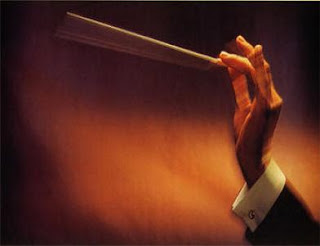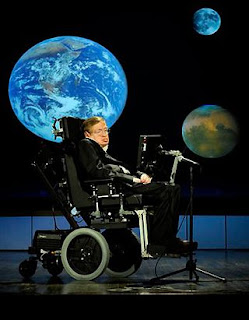I've been to a lot of operas. I've seen the well-known staples of the repertory and the odd late flowerings of German Romanticism. Here's a quick look at ten operas I wouldn't mind seeing again in the theater. And just to make it interesting, they're by ten different composers.
 |
| Samuel Ramey as Mefistofele at the Lyric Opera of Chicago. Photo by Tony Morano. |
1) Mefistofele by Arrigo Boito
Back in the glory days of the New York City Opera, this massive take on the Faust legend (told from the devil's perspective) was a regular player on the stage at 20 Lincoln Center. Norman Triegel (and later, Samuel Ramey) reigned supreme. A revival there is unlikely, but with the right bass, this can be a compelling evening.
Mr. Ramey sang the part at the Met in 2000, in a production imported from the San Francisco Opera.
(...and it goes well with...)
2) Doktor Faust by Ferrucio Busoni
The worst example of Regietheater I can recall at the Met (yes, worse than the Attila from last year) was the 2001 Peter Mussbach staging of Busoni's final opera. Despite a great cast, this very weird staging (featuring a stage surface covered with moguls and the main characters wearing fedoras, trenchcoats, and sliding back and forth on rail-mounted La-Z-Boys) makes me feel like I still haven't seen this opera.
3) Benvenuto Cellini by Hector Berlioz
The Met decided to mount Berlioz' first opera in 2003 as part of music director James Levine's ongoing fascination with this French Romantic composer. While the company is planning a 2012-13 revival of Les Troyens, plans to bring back this story of an Italian Renaissance sculptor and his artistic struggles were scuppered by general manager Peter Gelb for "economic reasons" in 2009. Instead, we got a weird revival of La Traviata, with a disastrous opening night.
 |
| Land of confusion: A scene from Doktor Faust. |
First presented at the Met in 1999 as a vehicle for Renée Fleming, this is a true American opera: the story of a Southern girl, a preacher's lust, and the tragedy that follows. With the right singer in the title role, this is a powerful, moving work from the composer of Of Mice and Men. One of the best American operas written in the 20th century.
5) Akhnaten by Philip Glass
This is the last and in some ways, the most accessible of Glass' first trilogy of operas based on historic/messianic figures. Glass uses dead languages to retell the story of the Pharoah who invented monotheism in 1370 B.C. He substituted worship of the sun-disk "Aten" for the regular pantheon of Egyptian gods. (It didn't take.) I saw this in 1984, when I was 11 years old, and would be fascinated to experience this opera again.
6) The Rake's Progress by Igor Stravinsky
The Met's 1998 Jonathan Miller staging of Stravinsky's English-language opera has already been revived once, with Paul Groves replacing the late Jerry Hadley in the role of Tom Rakewell. This is a powerful, moving work in Stravinsky's neo-classical style. In addition to being the only opera to have a bearded lady as a major character, the work (with a libretto by W.H. Auden) has Faustian overtones in the devilish character of Nick Shadow. And yes, when I saw this opera, Nick was played by...Samuel Ramey.
7) Palestrina by Hans Pfitzner
I saw this once--the one time this opera was performed here by the Royal Opera House of Covent Garden. Palestrina was staged at the Met with a stellar cast of German singers, with Thomas Moser in the title role. Hans Pfitzner's opera retells a (false) story of the great composer Giovanni Pierluigi di Palestrina and his struggles against church censorship and the Council of Trent. The music is really good, even if the second act makes no dramatic sense.
8) Ariane et Barbe-Bleu by Paul Dukas
City Opera staged this rare Dukas work in 2005. Written by the composer of The Sorceror's Apprentice, this is a very different take on the Bluebeard with a libretto by Maurice Maeterlinck, author of Pelléas et Mélisande. I saw it when the American Symphony Orchestra presented the work under the baton of Leon Botstein. But that was a concert version. I never got a chance to see the '05 production. How about a revival?
9) The Mines of Sulphur by Richard Rodney Bennett
This 20th century story of bandits who encounter the supernatural in the course of a home invasion is a fine and underrated example of 20th century British opera. The City Opera staged Mines in 2005 and should seriously consider a revival. Richard Rodney Bennett is a powerful, tonal composer best known for his film work, including the fine score for the film Murder on the Orient Express.
10) Die Meistersinger von Nürnberg by Richard Wagner
I've seen every run of this opera since 1995. The Met's magnificent Otto Schenck staging is a relic of the Joseph Volpe era. But it's also the best of the nine Wagner stagings put on by the German director in the '70s, '80s and '90s. Of course I have it on DVD, but there's no substitute for a live six-hour feast of Meistersinger--it's like Oktoborfest--without the hangover!

























